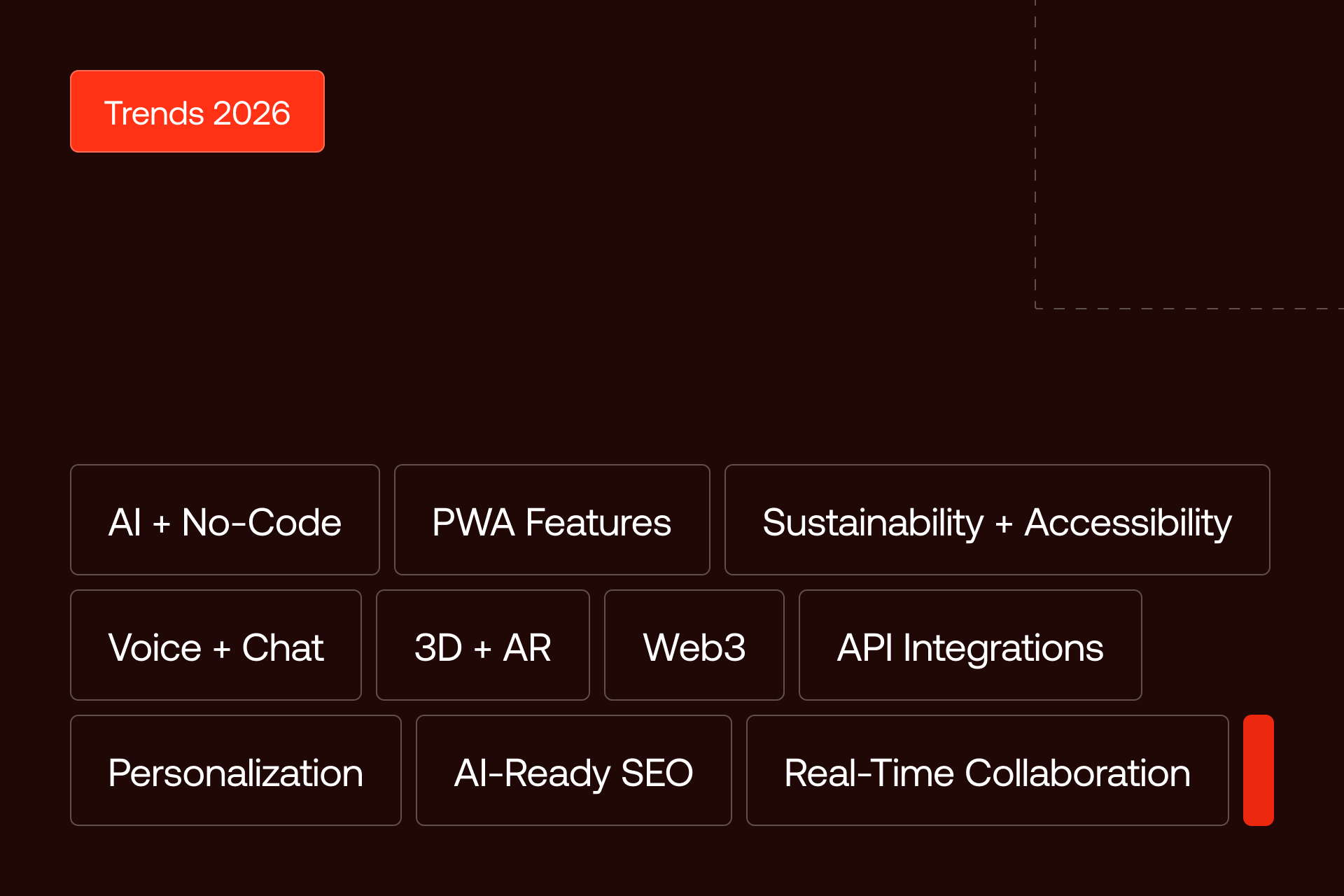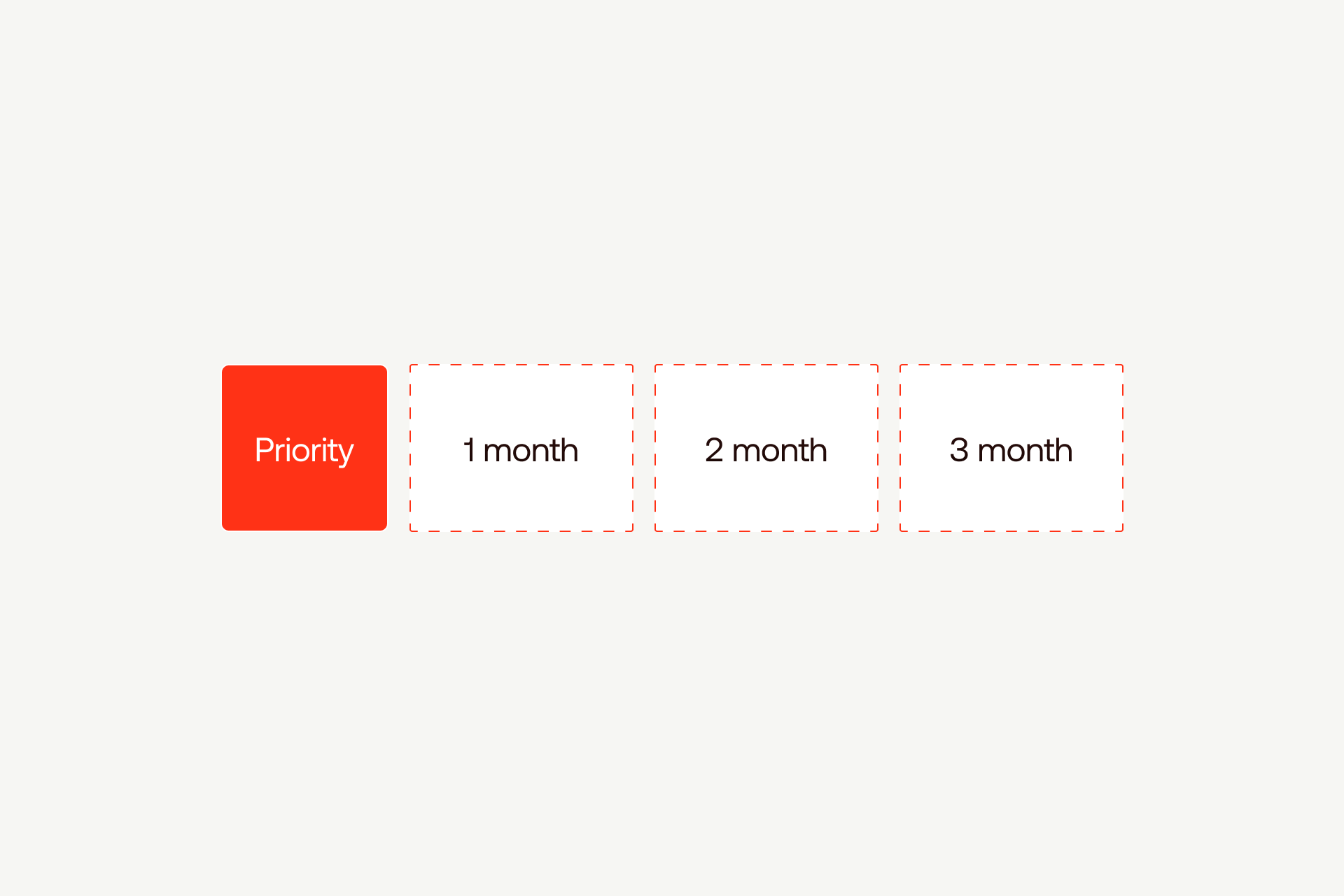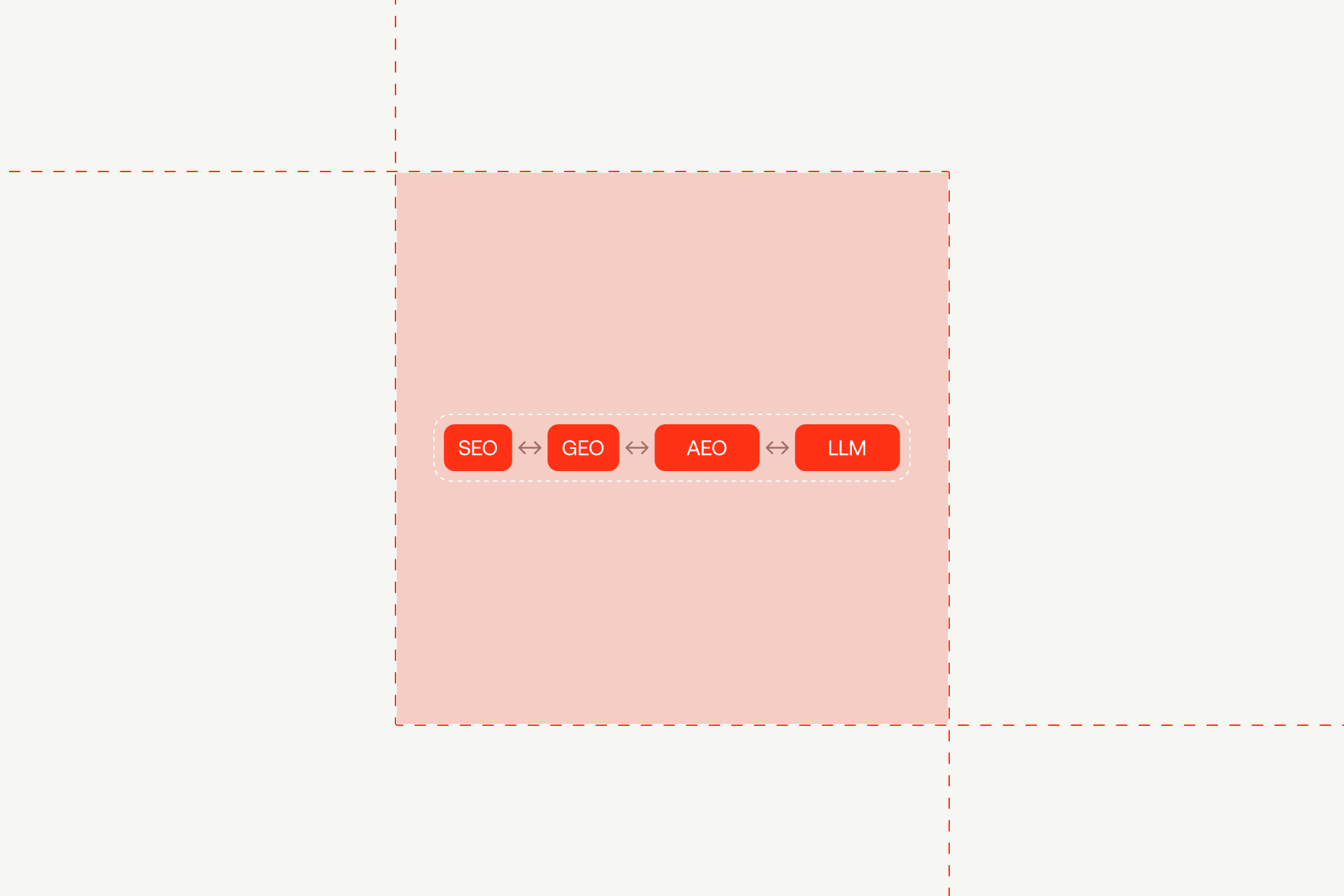Web Development Trends 2026: Build Faster, Smarter

Web Development Trends 2026: AI, No-Code, and App-Speed Websites
Web development never really stops evolving. Every year, the people building the tools, developers, designers, product folks find new ways to make sites faster, smarter, and easier to use. Some trends fade, some stick. And as we head into 2026, a few practices are looking less like “cool experiments” and more like must-haves.
We’ve spent time exploring and testing these approaches so you don’t have to waste your energy chasing fads. This guide focuses on what’s worth trying, and why it matters for your site, your users, and your bottom line.
Why 2026 Feels Different
This isn’t just “another year in tech.” A few big shifts are changing the game:
- AI tools are now practical. They can ship usable layouts in hours, not weeks.
- Websites feel like native apps. Faster, smoother, more interactive than ever.
- Privacy laws are tightening. You can’t just collect whatever you want and hope for the best.
The old “launch it and leave it” approach is dead. Websites are living products now, they need to be measured, optimized, and kept in shape if you want results. Budgets are moving toward speed, accessibility, and ROI, because these things pay off, not because they look good in a pitch deck.
Before You Chase Trends: Nail the Essentials
You can’t build a skyscraper on shaky ground. The following aren’t optional, they’re the fundamentals every site needs before you start layering on advanced features.
- Speed – Pages should load in under 2 seconds if you want users to stay or bounce out of your website.
- Mobile-ready – Your site has to look and work great on phones and tablets, half your visitors expect it.
- Security – HTTPS, secure forms, and regular updates keep your users (and you) safe.
- SEO basics – Clean headings, meta tags, and HTML help search engines actually find you.
- Easy CMS – You should be able to update your own content without calling a developer.
- Analytics – You need to know what’s working and what’s not, based on actual data.
- Backups – One glitch shouldn’t mean starting over from scratch.
- Cross-browser compatibility – Your site should behave consistently in Chrome, Safari, Firefox, and beyond.
- Legal compliance – GDPR, CCPA, and cookie banners aren’t optional, they keep you legit.
Bottom line: If you haven’t nailed these basics, chasing new trends is like adding a turbocharger to a car with no wheels.
Quick Trends Snapshot
| Trend | Why It Matters | How To Use It |
|---|---|---|
| AI + No Code | Faster Builds, lower cost. | Use AI with Webflow, refine, ship quickly. |
| PWA Features | App-like speed without native app cost. | Add offline support, install option, push alerts. |
| Sustainability + Accessibility | Faster, greener, usable by all. | Optimize assets, follow WCAG. |
| Voice + Chat | Quicker answers, lower support costs. | Add AI chat, voice search, natural language tools. |
| 3D + AR | Boosts engagement and buying confidence. | Use 3D previews, AR try-outs, compress assets. |
| Web3 | Privacy and ownership, growing adoption. | Add blockchain logins, crypto payments. |
| API Integrations | Sites stay live and accurate. | Connect CRMs, inventory, live feeds. |
| Personalization | Higher engagement and conversions. | Show content based on location or behavior. |
| AI-Ready SEO | Needed for AI-driven search visibility. | Use schema, clean HTML, structured content. |
| Real-Time Collaboration | Cuts delays and miscommunication. | Enable multi-editor, live editing, fast reviews. |
Top Web Development Trends That We’ll Be Seeing in 2026
Now that we’ve covered what every website needs to have we can move to practices that will stick around for a while in the dev world.

1. AI + No-Code: Fast Builds, Smarter Websites
AI builds the skeleton, you make it human. Tools like Webflow + AI mean even small teams can launch something complex without needing a giant dev budget. Think draft today, tweak tonight, ship tomorrow.
Why this web development trend matters
AI tools integrate well with visual builders like Webflow, cutting developers time and lowering the barrier for small teams to launch big ideas. You can build complex functionality without hiring a full stack team, then tweak and ship updates faster than ever.
2. PWA-Style Features: Websites That Feel Like Apps
This is all about fast, installable, offline-friendly websites.
What this trend can do for you:
- Installability (add to home screen).
- Offline support (cached pages still work without a signal).
- Background sync (updates content quietly in the background).
- Push notifications (order updates, not spam).
Why this web development trend matters
PWAs bridge the gap between native apps and traditional websites. They boost engagement with app-like speed and convenience, while avoiding the expense and upkeep of separate native applications.
3. Sustainability + Accessibility: Performance With a Purpose
Lean, efficient sites load faster and pollute less. So thinking about cutting heavy assets, compressing images, and optimizing hosting can shrink your website’s carbon footprint (yes, websites have it too). On the accessibility side, following WCAG standards makes your website usable for everyone.
In Webflow, that means:
- Semantic HTML (use the right element types)
- Proper heading hierarchy
- Alt text on every image
- Color contrast that passes checks
Why this web development trend matters
Sustainability lowers hosting costs, reduces environmental impact, and improves performance. Accessibility widens audience reach, meets legal requirements, and improves overall UX. Both are now key competitive factors.
4. Voice + Chat: Frictionless Interaction
Voice search and AI chat help people get answers instantly without digging through menus. It’s also great for support, lead capture, and accessibility.
Where it shines:
- Support triage (“Where’s my order?” and instant answer)
- Product finders
- Natural-language search
Why this web development trend matters
Voice and chat interfaces improve accessibility, speed up user interactions, and reduce support costs. They’re becoming an expectation, especially in ecommerce and customer service.
5. 3D + AR: Interactive Product Previews
Show products in 3D or in someone’s actual room via their phone camera. The tech is now smooth enough to run without tanking page speed.
Best practice:
- Progressive enhancement so core content works without 3D.
- Use formats like GLTF + Draco compression.
- Keep load times fast for average devices.
Why this web development trend matters
3D and AR experiences boost engagement, help users understand products better, and increase confidence before purchase. As tools become easier to use, more brands are adopting them.
6. Web3: Decentralized Features in a Browser
Blockchain logins, NFT-based access, on-site crypto transactions - still niche, but growing. More about digital ownership and privacy than hype.
Why this web development trend matters
Web3 offers decentralization, privacy, and verifiable ownership values that resonate with users. As infrastructure matures, these features will be as common as embedded payment gateways.
7. API Integrations: Live Data Everywhere
In 2026 your website doesn’t have to be static. With APIs your website talks directly to other services like inventory counts, CRM updates, live event feeds, without you manually updating everything.
Reliability tips:
- Cache data when you can.
- Retry on failure, but limit attempts.
- Use circuit breakers to avoid cascading failures.
- Monitor integrations so issues don’t go unnoticed.
Why this web development trend matters
API integrations turn static websites into connected, dynamic hubs. They improve accuracy, reduce errors, and keep information consistent across platforms.
8. Personalization: Every Visitor Gets a Custom View
With the right data layer and logic, your website can swap out content by location, behavior, or history. In 2026 this feature isn’t just a “nice to have”, rather it keeps visitors engaged longer and converts better.
Example: Personalization works best when it’s useful, transparent, and consent-based, so think of homepage modules that change based on intent (shopper vs. researcher).
Note: The trick is making it feel helpful, not creepy.
Why this web development trend matters
Personalization increases engagement, conversions, and loyalty. With modern tools, even small businesses can deliver tailored experiences that used to be exclusive to large enterprises.
9. AI-Ready SEO: Structured for Machines and Humans
Search is becoming more AI-driven, meaning sites need to be extra clear, structured, and machine-readable. Schema, good HTML, and natural language matter more than ever.
Why this web development trend matters
AI-ready SEO keeps websites visible as search changes. Structured, authoritative content is more likely to be surfaced by AI-driven search engines.
10. Real-Time Collaboration: No More Content Ping-Pong
Multiple people can edit and update the site at once. Apply this trend and there will be no more “Who has the latest version?” or waiting a day for a small text change. This one feature alone could potentially save hours every week, and in short terms it revolved around:
- Multiple editors working on a website at once
- Live updates without version conflicts
- Faster review and approval cycles
- Better workflow for remote and distributed team
Why this web development trend matters
Real-time collaboration shortens timelines, reduces miscommunication, and keeps websites moving from idea to launch without delays.
How to Prioritize the Next 90 Days

- Month 1: Fix performance and accessibility basics.
- Month 2: Add one PWA feature like offline caching or push.
- Month 3: Test an AI/no-code workflow and connect a key API.
One focused win per month beats a dozen half-finished projects.
What to Measure
- LCP, INP, CLS scores.
- Total JS weight.
- Accessibility score.
- Conversion rate.
- Assisted traffic from AI surfaces.
- API error rate.
Track with dashboards, not gut feelings.
Shadow Digital’s 2026 Playbook
“Performance first. Accessibility by default. Composable APIs for flexibility. PWA reliability for speed. AI and no-code to ship faster. Every feature is tied to a metric you can check.”
Wrap-Up & Next Steps
Pick one quick win this week, one pilot for the next 30 days, and one bigger change for the next 90. Small steps add up fast. And if you want a clear plan, Shadow Digital can help you prioritize and build. Book a free 30-minute call and get started today!
FAQ
Will AI replace devs?
No. It handles repetitive tasks, but humans still drive strategy and quality.
Do PWAs replace native apps?
Sometimes. For deep hardware access, native still wins. Otherwise, PWAs can cover most needs at lower cost.
Is personalization okay with privacy laws?
Yes, if it’s consented, clear, and offers a default for those who opt out.
Is Web3 worth it for most websites?
Not yet, unless your audience already values decentralization and ownership.

Let's Build Your Webflow Website!
Partner with experts who understand your vision. Let’s create a converting user experience and build your website for future growth.



